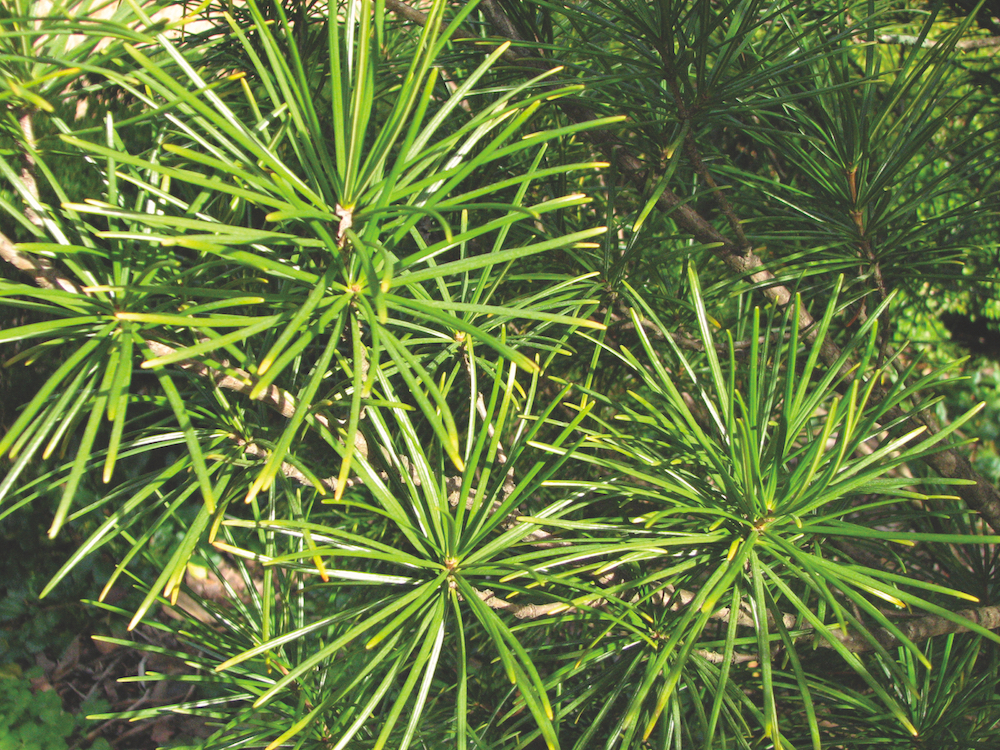Even accomplished horticulturists who stroll through the gardens at the estate have been known to encounter an unfamiliar tree. According to Horticulture Manager Jo Phillips, “Mrs. Callaway is responsible for perplexing our visitors,” referring to the property’s last resident, Alice Hand Callaway. “She loved to try new plants and was well-known for growing all kinds of botanical rarities.” She was, in fact, continuing a tradition of cultivating exotic plants that was started by Sarah Ferrell in the nineteenth century. It was Sarah who added the ginkgo and China fir to the gardens, and while both of these trees are relatively common today, in Sarah’s time they were very rare. In fact, we have some evidence that Sarah acquired these trees from the famous Fruitland Nursery, now converted into a golf club named Augusta National.
One of the best examples of Mrs. Callaway’s penchant for collecting rare plants was her interest in Japanese umbrella-pine. According to her notes, she added an umbrella-pine, Sciadopitys verticillata, to the garden as early as 1969 but after several years it died. Mrs. Callaway did not give up and planted several more trees in a variety of different locations to determine where they would grow best. Her trial and error approach was successful! While at least two trees succumbed, the specimen she sited on the fourth terrace thrived and now stands twenty feet tall. This evergreen tree has whorled needles that are clustered at the end of the branches giving it a very distinctive “umbrella” effect which is quite striking in the snow. Most horticulturists consider this pine difficult to grow south of zone 7 because of excessive summer heat, so the tree benefits from light shade in our hot climate. Umbrella-pine only grows about six inches per year, which may explain why it is uncommon in the nursery trade. However, it is definitely worth the wait as it is one of the most distinctive and handsome conifers grown.
Perhaps the most uncommon tree Mrs. Callaway cultivated was the dove tree, Davidia involucrata, which she planted in the sunken garden. She recorded in her notes that she acquired two plants in 1965, one from Wayside Gardens in South Carolina and another from Brimfield Gardens Nursery in Connecticut. Davidia is also known as the handkerchief tree because when it blooms in early May the white flower bracts hang down and look like handkerchiefs. A native of China, the species was not actually discovered until 1904, and since that time has always been sought by plant connoisseurs. The tree seems to be a little more common in northern areas that have cooler summers. Noted plantsman Dr. Michael Dirr mentioned the dove tree growing at Hills and Dales in his seminal publication Manual of Woody Landscape Plants proclaiming, “.. .the finest specimens I have seen are at the Arnold Arboretum, Swarthmore College and Hills and Dales.” The two trees Alice planted survived for many years, but eventually one declined and the other was damaged during a storm.
The next time you take a stroll through the garden, look for the Japanese umbrella-pine standing guard on the fourth terrace and for our newly planted dove tree growing happily in the shade of Sarah Ferrell’s China fir. The dove tree was given to us by the Troup County Master Gardeners as a special gift after Hills and Dales helped host the 2010 State Master Gardeners Conference. While it may take up to ten years to flower, once it does we know visitors will be enthralled by the elegant white blooms.
